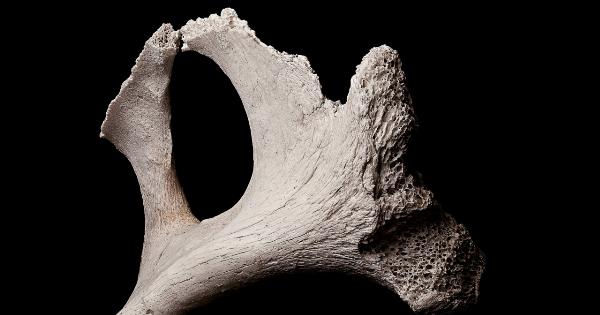Diabetes is a chronic condition that affects millions of people worldwide. It is characterized by high levels of glucose in the blood and can lead to several health complications. One such complication is a decrease in bone density and strength.
Individuals with diabetes are at a higher risk of developing osteoporosis and bone fractures. In this article, we will explore how diabetes impacts bone density and strength and offer tips to help prevent bone loss.
What is Bone Density?
Bone density refers to the amount of bone mineral in bone tissue. Bones are primarily composed of collagen protein and calcium phosphate mineral. The combination of the two creates a strong and sturdy bone.
Our bones reach their peak density by age 30, and then slowly start to lose density. This is a natural part of aging, and many factors can influence the rate of bone loss.
How Does Diabetes Affect Bone Density and Strength?
Individuals with diabetes are at an increased risk of developing osteoporosis. Osteoporosis is a condition in which bone density is reduced, making bones fragile and more susceptible to fractures.
There are several reasons why diabetes can impact bone density and strength:.
1. High Blood Sugar Levels
Individuals with diabetes have high levels of glucose in their blood. This excess glucose can damage blood vessels and reduce blood flow to the bones.
Reduced blood flow can lead to decreased bone formation and increased bone breakdown, resulting in a loss of bone density.
2. Inflammation
Diabetes can lead to chronic inflammation in the body. Inflammatory cytokines can cause bone loss by activating cells that break down bone tissue and inhibit cells responsible for bone formation.
3. Diabetic Complications
Diabetes can lead to several complications, such as neuropathy and kidney disease, which can impact bone health. Diabetes-related nerve damage can cause muscle weakness and balance problems, increasing the risk of falls and bone fractures.
Kidney disease can lead to decreased bone density and increase the risk of fractures.
Preventing Bone Loss with Diabetes
Preventing bone loss with diabetes involves managing blood sugar levels and following strategies to promote optimal bone density and strength.
1. Manage Blood Sugar Levels
Maintaining stable blood sugar levels can help prevent bone loss. High blood sugar levels can damage blood vessels and reduce blood flow to the bones. By keeping blood sugar levels in a healthy range, you can promote optimal bone health.
2. Exercise Regularly
Regular exercise can help improve bone density and strength. Weight-bearing exercises such as walking, jogging, and weightlifting can promote bone growth and reduce the risk of fractures.
Exercise can also help improve balance, reducing the risk of falls and fractures.
3. Get Enough Calcium and Vitamin D
Calcium and vitamin D are essential nutrients for strong bones. Calcium is necessary for bone formation, while vitamin D helps the body absorb calcium. Aim to get enough calcium and vitamin D through a healthy diet or supplements if needed.
4. Quit Smoking
Smoking can increase the risk of bone fractures and decrease bone density. Quitting smoking can help prevent bone loss and improve overall health.
5. Talk to Your Doctor
If you have diabetes, it is important to talk to your doctor about strategies to promote optimal bone health.
Your doctor may recommend bone density testing and offer personalized recommendations for diet, exercise, and medication management to prevent bone loss.
Conclusion
Diabetes can impact bone density and strength, increasing the risk of fractures and osteoporosis.
By managing blood sugar levels, exercising regularly, getting enough calcium and vitamin D, quitting smoking, and talking to your doctor, you can help prevent bone loss and maintain optimal bone health.































